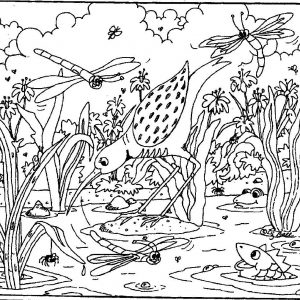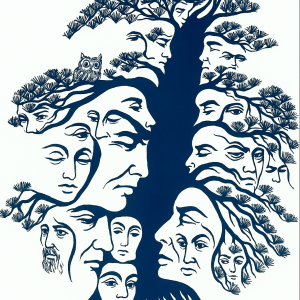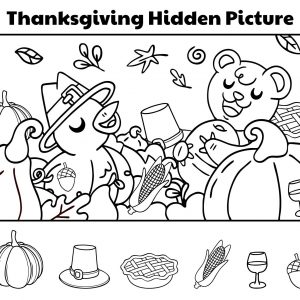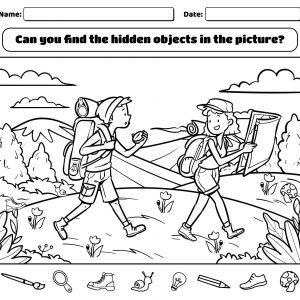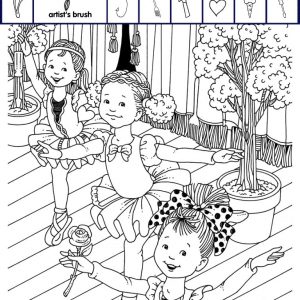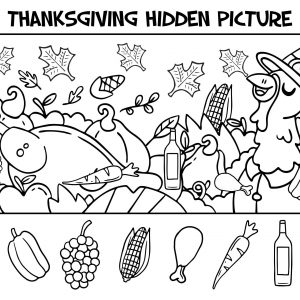The Curious Rabbit: A Hidden Object Puzzle in a Woodland Wonderland
Introduction: Nature’s Puzzle Waiting to Be Solved
There’s something enchanting about hidden object illustrations. At first glance, the scene seems simple—a curious rabbit sitting in a quiet woodland clearing. But as you let your eyes wander, you realize the picture is filled with playful secrets. Everyday objects are tucked into the trees, mushrooms, and leaves, cleverly disguised to challenge your perception. This is no ordinary drawing—it’s a puzzle that turns a peaceful moment in nature into a delightful adventure of discovery.
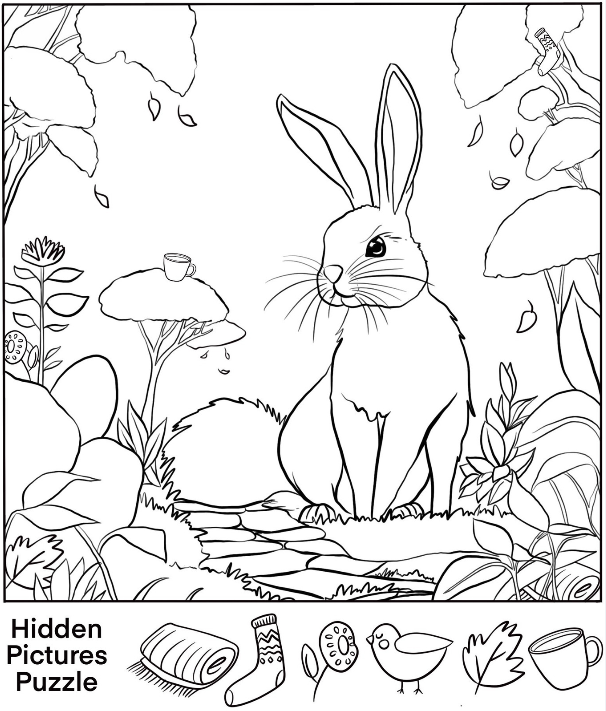
The Rabbit as the Star of the Scene
Front and center, the rabbit captures your attention. Its alert ears and sharp gaze suggest curiosity, as though it knows there’s more to the forest than meets the eye. The rabbit isn’t just part of the story—it’s the guide, encouraging us to explore the scene the way it would, with keen senses and patience. But while the rabbit looks calm, the environment around it hums with hidden surprises.
The Mushrooms: More Than Meets the Eye
The mushrooms scattered across the scene are the perfect hiding spots. One mushroom even has a teacup perched delicately on top—an object you wouldn’t expect in the forest. Another mushroom, with its round cap, could easily disguise other shapes if you take a closer look. These details highlight how ordinary elements of nature can transform into playful puzzles when viewed with fresh eyes.

The Trees as Secret Keepers
The tall trees aren’t just background—they’re part of the mystery. If you scan the branches closely, you’ll spot an unusual object hidden among the leaves. A hammer, for instance, peeks out from the top right, cleverly blending with the lines of bark. This is what makes puzzles so fun—the unexpected tucked into the familiar. The trees serve as silent keepers of secrets, holding objects you’d never expect to find in a quiet woodland.
The Ground and Flowers: Hidden in Plain Sight
Look down, and you’ll see the path of stones, the grass, and the flowers framing the rabbit. While they might seem like simple details to complete the scene, they’re also clever disguises. The patterned petals, curling stems, and layered leaves create perfect spots for hidden objects. It’s a reminder that sometimes the most obvious places are where surprises are hiding.

Why Hidden Object Puzzles Are So Addictive
Why do puzzles like this capture our attention so easily? It’s because they combine calm with curiosity. You’re not just looking—you’re actively searching, training your brain to notice the little things.
- They sharpen observation skills: You become more aware of patterns and details.
- They teach patience: The hunt takes time, but the reward is satisfying.
- They boost creativity: Each hidden item adds a new layer to the story.
- They provide stress relief: Immersing yourself in the search is both relaxing and fun.
Every discovery feels like a small victory, making you want to keep going until you’ve found them all.

Tips for Solving Hidden Object Puzzles
Want to improve your searching skills? Here are a few tips that can help you uncover hidden items faster:
- Scan systematically: Move across the picture in sections rather than darting around randomly.
- Check for odd shapes: Anything that doesn’t quite fit probably has meaning.
- Focus on outlines: The edges of objects often give them away, even when they’re disguised.
- Take breaks: A fresh perspective can make hidden objects pop right out.
The Story Behind the Illustration
This woodland puzzle feels like more than just a game—it tells a story. A rabbit pauses in the clearing, while the forest quietly hides human objects among its natural beauty. It feels like a blend of two worlds: the calm of nature and the curiosity of human imagination. Each hidden item adds a whimsical twist, making the woodland seem magical, as though it’s a place where anything is possible.
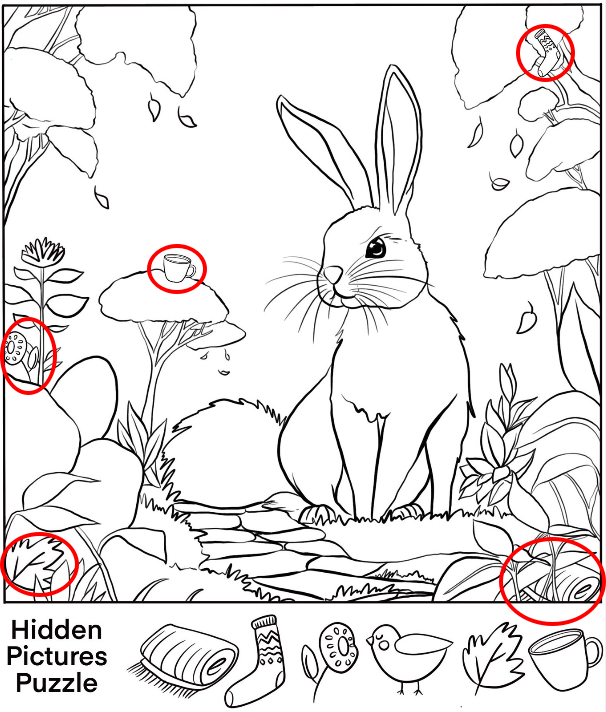
Conclusion: Discover the Magic in the Details
The rabbit may be the star of this illustration, but the real adventure lies in the hidden objects scattered throughout the scene. From the teacup on the mushroom to the hammer tucked in the tree, each discovery transforms the drawing into a playful puzzle. Hidden object illustrations like this remind us to slow down, pay attention, and find joy in the little things.
Because, just like in life, the magic often isn’t in the big picture—it’s in the tiny details waiting to be noticed.
